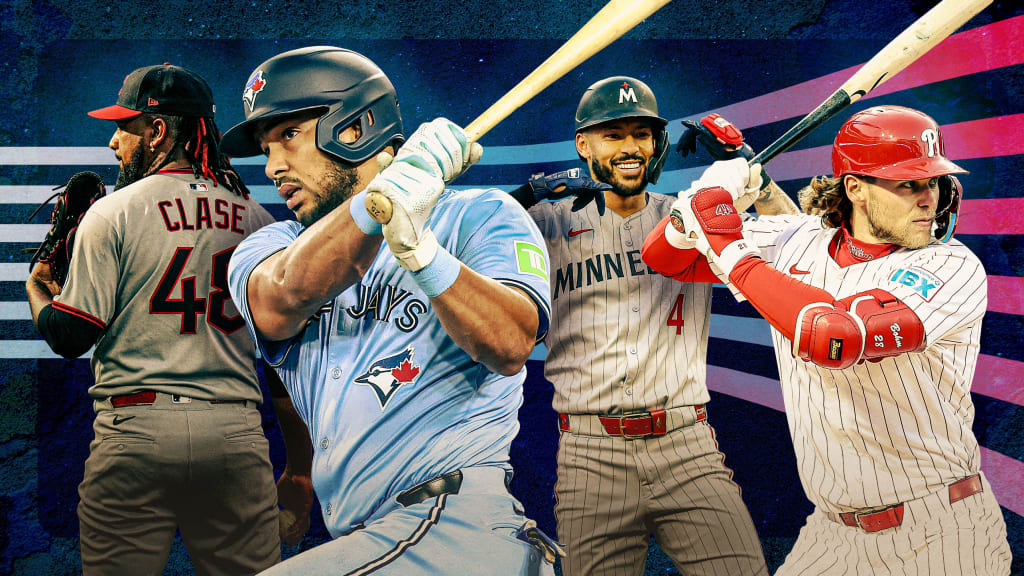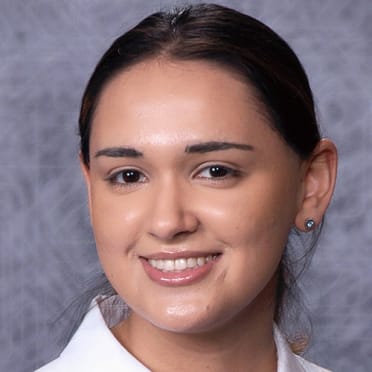
A slow start, in and of itself, doesn't necessarily mean anything. The question is when, exactly, a slow start becomes worthy of genuine concern.
As with basically everything in baseball, the catch-all answer is, "Well, it depends," and we could probably leave it there, but that doesn't really do much for you when you're watching your ace get hit hard for the fourth time this month. What you're seeing is real, but is it just another thing you'll have forgotten about come September?
Full disclosure, our ability to predict the future is on par with yours, but we do have some theories. Here's a breakdown of nine players who carried shaky starts into May -- the bad, the good news and our (subjective) take on how worried you need to be.
Statistics are through Thursday’s games.
Anthony Santander, OF/DH, Blue Jays
2025 stats: .178/.258/.314, 4 HR
The bad news: Santander's average launch angle is down over six degrees, and his barrel rate to this point is about half of what it was last year -- reminder that he hit 44 home runs for the Orioles last year, which the currently power-starved Blue Jays have to be thinking about.
The good news: 39 of his home runs last year were hit to his pull side, which brings us to the positive -- he's still pulling as many balls in the air as ever.
Should you be worried? Not especially. His career OPS in April and March (.645) is over 100 points lower than his average (.768), and he's still getting under the ball. Re-evaluate when the weather's warmer.
Carlos Correa, SS, Twins
2025 stats: .223/.267/.321, 1 HR
The bad news: Not only are his hard-hit and barrel rates down (3.6 and 4.8 points, respectively), his ground ball rate is now up to 47.8%, the highest it's been since 2020.
The good news: Brief as his season may have been, Correa was quite productive when he was on the field in 2024, so replicating those numbers certainly wouldn't be a bad thing -- to that point, his whiff rate is consistent with last year's and his K% remains under 20%.
Should you be worried? Not at all -- yet. He's been playing at less than 100% for a while now -- grant him a little more time to settle in.
Marcus Semien, Rangers
2025 stats: .188/.273/.250, 3 XBH
The bad news: Carrying on from 2024, his hard-hit (-2.6 points) and sweet-spot rates (-1.5 points) continue to dip. Bear in mind that his slugging percentage already fell 87 points between 2023 (.478) and 2024 (.391), so he doesn't have far to go.
The good news: Through his expected batting average and slugging percentage you can at least tell that his actual quality of contact isn't much worse than it was last year -- which, as mentioned, wasn't a great season, but it was, at least by OPS+, exactly average (100).
Should you be worried? … yes. It's nothing personal, either. He's a 34-year-old middle infielder who's hardly missed a game in seven seasons, already coming off a steep offensive decline last year -- if there's one thing no player can outrun, it's his own body.
Willy Adames, SS, Giants
2025 stats: .218/.298/.306, 2 HR
The bad news: Less bat speed, more grounders. Adames' average bat speed is down 2.0 mph from 2024, tied for the fourth-largest dip among qualifying hitters. His declining sweet-spot rate doesn't compare nearly as poorly to the pack (-8.1 points) but still ranks 18th out of 181 qualifying hitters.
The good news: Barrel and bat speed issues aside, his hard-hit rate is actually up a tick, his whiff rate has dropped and he's making more contact in the zone.
Should you be worried? Only a bit. The bat speed thing is a little freaky, but if it's not causing a dip in exit velocity, it's nothing to worry about now. Being that we're entering month two of a seven-year deal, it's also far too early to question whether his new, famously pitcher-friendly home ballpark is a good fit for him.
Alec Bohm, 3B, Phillies
2025 stats: .222/.252/.274, 5 XBH, 0 HR
The bad news: Bohm excelled against breaking balls last year (.302 AVG, .512 SLG), but a month into the 2025 season, he's yet to find them again. As of writing, he's gone 4-for-39 (.103), and worse yet, all four have been singles.
The good news: His approach looks fine. His squared-up and whiff rates have actually improved from last year, and his hard-hit rate is up 3.4 points.
Should you be worried? Nah. Given how many high-profile slumps he's been through, and the honesty with which he's weathered them, you may still be waiting for the other shoe to drop, but if he wasn't a legitimately good hitter, he wouldn't still be here, nor would he have those underlying metrics.
Tanner Houck, RHP, Red Sox
2025 stats: 6.38 ERA, 1.47 WHIP, 7 HR allowed
The bad news: Houck's already problematic 41.8% hard-hit rate ranked in the 24th percentile of qualifying pitchers last year; he's at 47.4% (16th percentile) through his first six starts this year. Looking at his elevated .294 opponents' batting average, there's definitely some tough luck mixed in, but had everything gone his way, they'd still be hitting .275.
The good news: At the end of the day, he's still getting ground balls, which is the thing he needs to have to fall back on. He could be getting more of them, but he's living a little above 50%, close enough to his 53.2% career average.
Should you be worried? Worried probably isn't the word, unless you were hoping Houck would be Garrett Crochet's co-ace. Even if you're doing everything right, pitching to contact rarely guarantees a good outcome. The odds of a rogue 5+ ERA season only increase with subpar infield defense, which is also something Houck has to contend with. He has more than enough time to turn things around, but it's something to monitor.
Zac Gallen, RHP, D-backs
2025 stats: 4.93 ERA, 1.30 WHIP, 2.39 K/BB
The bad news: Gallen's reputation as an ace had a lot to do with his four-seamer, but for the second year in a row, that pitch just isn't getting the job done -- if anything, it's only gotten worse, considering opposing hitters' .481 expected SLG against it (vs. their .463 xSLG in 2024.)
The good news: His tertiary pitches are kind of picking up the slack -- hitters are 4-for-36 with three singles and a double against his changeup and slider combined.
Should you be worried? Don't panic, but yes. One year without your best pitch is a fluke. Two in a row isn't. Considering that Gallen has already abandoned a cutter in favor of his four-seamer, it's also reasonable to ask where he might go from here if he does need a new primary fastball.
Emmanuel Clase, RHP, Guardians
2025 stats: 6.75 ERA, 1.95 WHIP, .397 oAVG
The bad news: He really needs to get his share of weak grounders, but his hard-hit rate is up about 10 points and his average launch angle is almost three times higher than last year.
The good news: Sure, after giving up five earned runs in 74 1/3 IP last year, he's already given up 10 in 13 1/3, but it's roughly half as bad as it looks -- see his 3.55 xERA (6.75 ERA), .272 xBA (.400 AVG) and .407 xSLG (.580 SLG.)
Should you be worried? Probably not. Even when things are going well, Clase walks a tightrope. We're not counting on anything near a repeat of his 2024 season, but this still looks like spectacularly hard luck.
Edwin Díaz, RHP, Mets
2025 stats: 4.50 ERA, 1.25 WHIP
The bad news: Our closers are kind of on the same page here. Díaz has also gotten knocked around, but in his case, he's being hit harder than he has in literal years -- since 2019, his first season in a Mets uniform, probably one he'd prefer not to revisit (5.59 ERA, 1.38 WHIP.)
The good news: Amidst all the loud contact, the swings and misses are still there -- in fact, the 52% whiff rate against his slider is comparable to what he had going in his 2021-22 seasons (in other words, the dream.)
Should you be worried? Considering the margins by which the NL East will be won, a little bit. His numbers are extremely reminiscent of the ones he was working with in 2019, when his peripheral metrics were strong but the results just weren't good enough.
